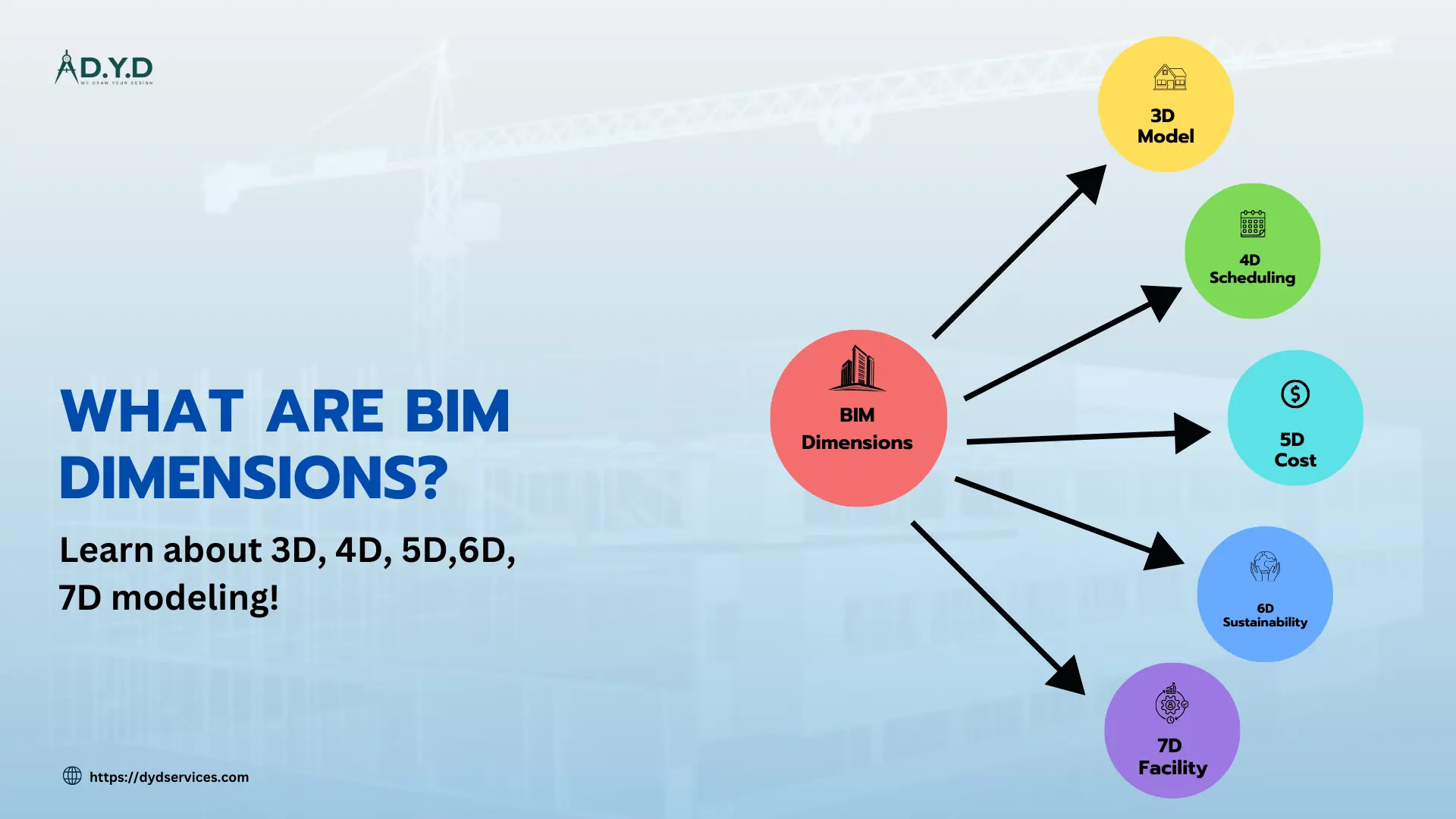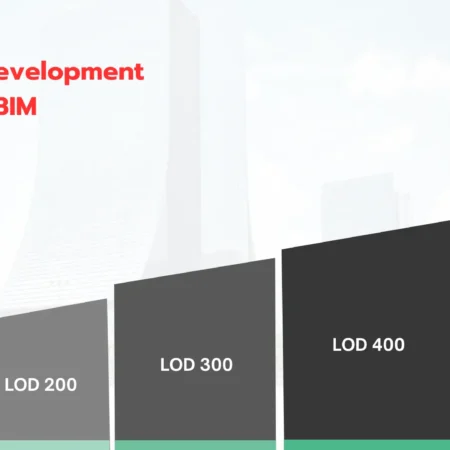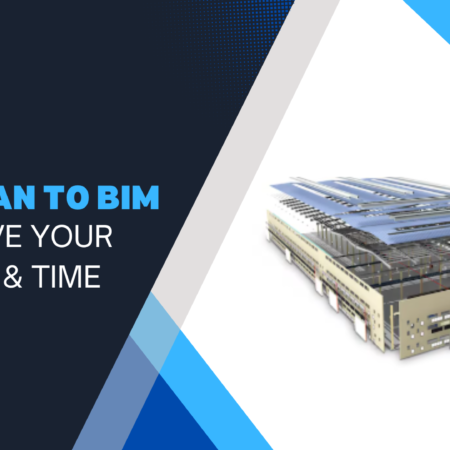
Building information modeling is a digital representation of physical and functional characteristics of a facility. The creation and management of a 3D model that contains all necessary data and information over the entire life of a building, from the design and construction to the operation and maintenance, is involved.
Through its multidimensional approach, it makes its users more efficient, collaborative, and accurate with their data across the project lifecycle. It would not be possible without the individual dimensions, and each of the dimensions of BIM brings unique capabilities that enable professionals to meet particular challenges and ultimately optimize results. Let’s look at these dimensions and their benefits.
1. 3D BIM: Visualization and Design
A building’s physical and functional aspects are visualized through 3D BIM, which creates detailed digital models of a building. It facilitates better collaboration and communication with stakeholders, allows better design accuracy, identifies clashes early, and avoids construction errors and rework, which makes it the first dimension, as it has the clearest representation of a building’s structure.
Benefits of 3D BIM:
- Improved Visualization: It assists stakeholders to appreciate what the construction pharynx is going to look like so that by the time that construction has started, very few changes are likely to occur.
- Enhanced Collaboration: This coordinating system is aligned in terms of visibility; all architecture, engineering, and construction teams have one model to work with.
- Reduced Errors: The early clashes are identified for the design conflict with potential clashes in order to minimize the construction change cost.
2. 4D BIM: Scheduling and Time Management
In 4D BIM, time-dependent data is incorporated into the 3D model, and construction tasks are coordinated with the schedule. And this integration enables the project teams to understand the construction schedules, optimize processes, and manage the resources in an efficient manner. It enables identification of the time risks so as to help improve the planning of a project and deliver the construction tasks in accordance with a schedule in addition to working in a loosely coupled environment with other phases.
Benefits of 4D BIM:
- Better Scheduling: It optimizes the construction timeline through simulation of the construction sequence and allocates the resources efficiently.
- Conflict Detection: It helps find scheduling issues before delays and disruptions.
- Improved Decision-Making: The visualization of tasks in relation to 3D models does help stakeholders to make better decisions for the project’s efficiency.
3. 5D BIM: Cost Estimation and Control
5D BIM has cost information and therefore generates fairly accurate costs of materials and human resources. It offers you leverage on your expenses and enables you to monitor your spending on project work in real time. It also allows the project team to learn about the cost-saving information and control the expenditures and costs within the project by changing the design and construction system.
Benefits of 5D BIM:
- Accurate Cost Estimates: Design is linked to costs for very accurate material, labor, and overhead calculations.
- Real-Time Budget Updates: Costs also adjust immediately with design or scope changes, thus the ability of teams to stay within budgets.
- Cost Optimization: 5D BIM allows us to find materials cheaper or other methods of construction that are not reflected in quality.
4. 6D BIM: Sustainability and Energy Analysis
Energy performance is what guides 6D BIM, as well as the optimization of sustainability. Energy/Environmental modeling provides input on which systems and materials to use, how to achieve compliance with green building standards, and the best methods to reduce carbon emissions and utilize environmentally friendly and energy-efficient construction principles from building design and construction through deconstruction of the building within the life cycle of the building.
Benefits of 6D BIM:
- Energy Efficiency: The pre-design phase of the design of more sustainable buildings entails energy use profiling and choosing energy-effective systems.
- Green Certifications: It enables the meeting of green building requirements such as LEED or BREEAM as it offers the chance to include sustainability herein.
- Reduced Carbon Footprint: Help design buildings with minimum environmental impact by managing the selection and process of material and constructing techniques and methods of buildings.
5. 7D BIM: Facility Management
Facility management information was implemented into the BIM model in the 7D dimension within the FM phase so that information collected serves a purpose of maintaining the building after it is built. It offers the asset information, maintenance schedule, and operations paramount to enhancing the general management in the long run. This in turn decreases the dimension of operational cost, enhances the functionality of the building, and brings early repair and care of the building to increase its durability.
Benefits of 7D BIM:
- Efficient Maintenance: Gives a convenient possibility to get a receipt of maintenance schedules and equipment data and more.
- Lifecycle Management: Assists the owners or managers to be able to increase the durability of the building through proper management and early calls for repair and maintenance services.
- Cost Reduction: Enhances performance of the building and saves operational costs through monitoring of systems’ operation and usage of energy.
Conclusion
The dimensions of BIM provide a holistic, data-driven approach to designing, constructing, and managing buildings. No matter what dimension (whether it’s the visualization of 3D, the time and cost efficiency of 4D and 5D, or the sustainability and facility management aspects of 6D and 7D), it adds value by improving collaboration, decreasing errors, and raising the bar on overall project performance.
Integrating these dimensions, the architecture, engineering, and construction (AEC) industries are moving towards more sustainable, efficient, and low-cost practices. New dimensions add capabilities and bring forth more comprehensive solutions for the built environment to make BIM evolve.
FAQs
- What are the 5 dimensions of BIM?
The 5 dimensions of BIM are:- 3D (Modeling): Physical representation of a project.
- 4D (Time): Integration of the project schedule.
- 5D (Cost): Budget estimation and cost management.
- 6D (Sustainability): Focuses on energy efficiency and environmental impact.
- 7D (Facility Management): Enhances lifecycle management, including operations and maintenance.
- How does 4D BIM improve project timelines?
4D BIM links construction schedules with the 3D model, enabling better planning, resource allocation, and milestone tracking. - Why is 5D BIM critical for cost management?
5D BIM integrates cost data with the model, providing real-time updates on budget impacts due to design changes or material choices. - What makes BIM dimensions different from traditional project management tools?
BIM dimensions provide a unified platform for visualizing, analyzing, and managing multiple project aspects like design, time, and cost, unlike traditional siloed tools. - Can adding dimensions to BIM help with risk management?
Yes, higher dimensions like 4D and 5D BIM help identify potential risks related to scheduling, costs, or design clashes, reducing uncertainties in project execution.



